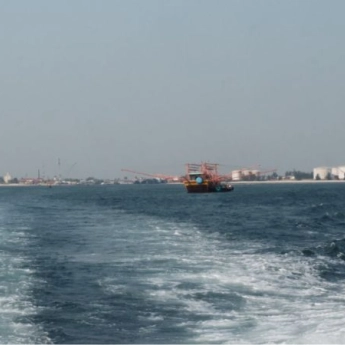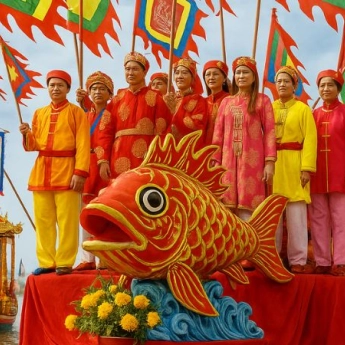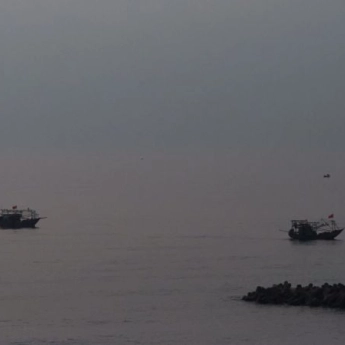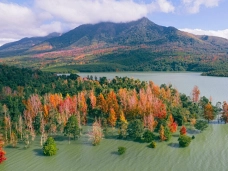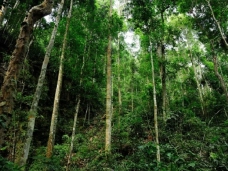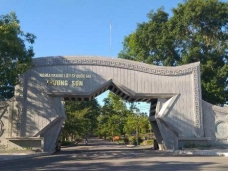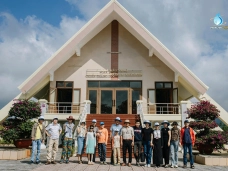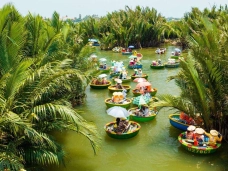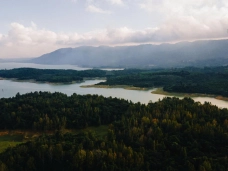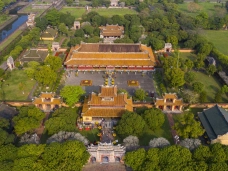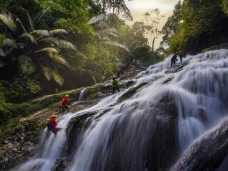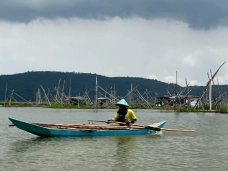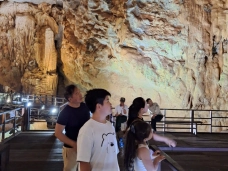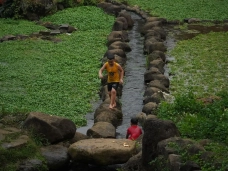Cua Viet – Unveiling the Natural and Cultural Soul of Quang Tri
30-04-2025 06:00
Main contents
Location
Highlight Image
Introduction
Located in Quang Tri province, Central Vietnam, Cua Viet is a strategic river mouth where the Hieu River flows into the East Sea. Beyond its military and economic importance, Cua Viet is a treasure trove of natural landscapes, cultural heritage, and historical significance. With pristine beaches, diverse ecosystems, and vibrant fishing communities, this emerging destination offers a compelling blend of ecotourism and historical tourism, rooted in centuries of Vietnamese resilience. This article explores the natural and cultural values of Cua Viet from past to present and outlines sustainable development strategies for the future.
Cua Viet Through the Lens of History
For centuries, Cua Viet has played a vital role in Vietnam's maritime history. As early as the Champa era, it served as a trading hub connecting Northern and Southern Vietnam and even Southeast Asia [5]. According to the Dai Nam Real Records, it flourished as a bustling port during the Nguyen Dynasty, welcoming merchant ships from across Asia and Europe [6].
During the Vietnam War, Cua Viet was a critical military base. Located near the 17th Parallel Demilitarized Zone (DMZ), it witnessed fierce battles and was a key logistics base for U.S. forces. Later liberated, it became a symbol of resistance and patriotism [3, 7]. Historical remnants such as bunkers and ferry docks still stand as silent witnesses to these pivotal years.
Following reunification in 1975, Cua Viet evolved into a modern seaport supporting fisheries and cargo transport [1]. Recent government investments aim to transform it into a coastal tourism hotspot, focusing on eco-friendly development and local culture [8].
Natural and Cultural Values
Natural Attractions
Stretching nearly 20 km along the coastline, Cua Viet Beach is a haven of white sand, clear waters, and untouched beauty. Recognized as a priority area for marine tourism in Quang Tri [2], its ecosystem hosts a wide variety of seafood like shrimp, squid, and reef fish.
Just 17 nautical miles offshore lies Con Co Island, formed from ancient volcanic basalt. A protected marine area, it boasts over 100 coral species and tropical fish [4, 9]. The island's biodiversity and lush forests attract nature lovers and researchers alike.
The Hieu River enhances the charm of the region, supporting fishing villages and local agriculture. However, environmental threats such as coastal erosion and storms remain challenges [5, 10].
Cultural Heritage
Cua Viet's soul lies in its fishing traditions and spiritual festivals. Ceremonies like the Cau Ngu Festival and Ba Trao chanting are preserved by generations of fishermen, reflecting deep-rooted ocean worship and community bonds [6, 10].
It also holds significance in modern Vietnamese history. The Mai Xa Ferry, part of the national heritage route “Ho Chi Minh Trail,” invites visitors to explore wartime relics and stories of sacrifice [3, 12].
Traditional craft villages producing fish sauce and handmade fishing nets still thrive here. These artisanal practices offer cultural immersion and sustainable livelihoods, recognized by regional tourism experts [6, 13].
Conclusion: Towards Sustainable Tourism
Cua Viet is more than a seaport — it’s a landscape shaped by nature, history, and community spirit. By embracing responsible tourism, eco-preservation, and local empowerment, this coastal gem can become a model destination for sustainable travel in Vietnam.
Let Cua Viet inspire your next journey — where pristine beaches, resilient stories, and authentic culture meet in harmony.
Phong Nha Viet
References
1. Bộ Văn hóa, Thể thao và Du lịch. (2022). Du lịch Quảng Trị - Cơ hội và thách thức.
2. Bộ Văn hóa, Thể thao và Du lịch. (n.d.). Quảng Trị - Vùng đất thành cổ ngoài nhiều di tích lịch sử còn có các điểm đến tuyệt đẹp không phải ai cũng biết.
3. Trung tâm Quản lý Di tích và Bảo tàng tỉnh Quảng Trị. (n.d.). Di tích quốc gia đặc biệt tỉnh Quảng Trị.
4. Viện Khảo Cổ Học. (2024). Lịch sử và Văn hóa Việt Nam - Từ góc nhìn đổi mới.
5. TaiLieu.VN. (n.d.). Tài liệu Bảo Vệ Bền Vững Tài Nguyên Thiên Nhiên.
6. Annales des Missions Étrangères. (1890). Notes sur les ports du Centre Vietnam. Paris: Société des Missions Étrangères.
7. U.S. Army Historical Series. (1978). The War in Quang Tri and the DMZ, 1967–1972. Washington, D.C.: U.S. Army Center of Military History.
8. Vietnam Travel Guide. (2023). Exploring the hidden gems of Quang Tri: Cua Viet Beach. Retrieved from [website].
9. Marine Biodiversity Journal. (2020). Coral reefs and marine ecosystems of Con Co Island, Vietnam. Volume 45, Issue 3.
10. Revue de Géographie Tropicale. (2018). Érosion côtière et gestion durable des littoraux au Vietnam. Volume 22, Issue 1.
11. Vietnam Cultural Heritage Journal. (2021). Cau Ngu Festival: A cultural symbol of Central Vietnam’s fishing communities. Volume 12, Issue 4.
12. Histoire et Mémoire du Vietnam. (2020). Les sites historiques de Quang Tri: Un patrimoine de mémoire nationale. Paris: Éditions L’Harmattan.
13. ASEAN Tourism Review. (2022). Traditional craft villages in Quang Tri: Opportunities for cultural tourism. Volume 8, Issue 2.



